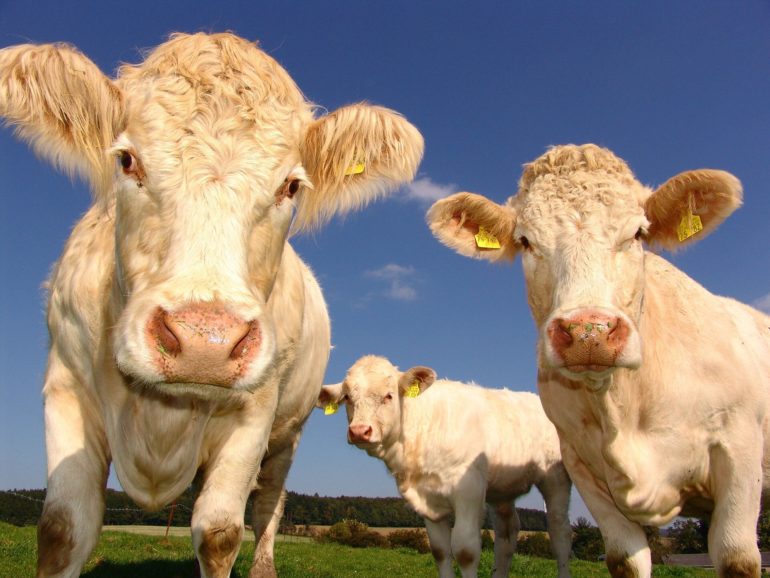A team of researchers at the University of Zurich has found that domestication of cows has led to reduction in cow brain size. In their paper published in Proceedings of the Royal Society B, the group describes comparing the skulls of extinct aurochs to modern cows.
Prior research has shown that domestication of animals tends to reduce brain size. Dogs, cats, pigs, sheep and horses, for example, have all been found to have smaller brains than their ancestors. In the new effort, the researchers wondered if the same were true for domesticated cows. To find out, they obtained 13 auroch skulls found over the years—they are an extinct bison-like creature from the Middle East that many believe are the ancestors of modern cows. The researchers measured the insides of the skulls of all of the specimens and used those measurements to calculate the brain size for each—and they used muzzle size to compare overall body size. They then obtained 317 skulls from modern domesticated cows across 71 breeds.
The researchers found that on average, the brains of the domesticated cows were 26% smaller than their ancestors. They also noticed that the cows that are around people the most tend to have the smallest brains of all the domesticated cows they tested. Dairy cows, for example, which spend a lot of time around people, tend to have the smallest brains of all those studied. Cattle used for bullfighting, on the other hand, tend to have the largest. This is because they are raised away from people to keep their fighting spirit alive. Bullfighting cattle, the team noted, had brains that were nearly as large as aurochs.
The researchers noted that beef cattle tend to interact with humans more than dairy cattle, yet the dairy cattle have smaller brains. They theorized that brain shrinkage in domesticated animals is related to the degree of docility that is bred into them. Docility in dairy cows is highly valued because it makes it easier to milk them. Such docility is not required in beef cows.
The DNA of three aurochs found next to the Elba shepherdess opens up a new enigma for paleontology
More information:
A. M. Balcarcel et al, Intensive human contact correlates with smaller brains: differential brain size reduction in cattle types, Proceedings of the Royal Society B: Biological Sciences (2021). DOI: 10.1098/rspb.2021.0813
2021 Science X Network
Citation:
More interaction with humans means smaller brains for cows (2021, June 14)
retrieved 14 June 2021
from https://phys.org/news/2021-06-interaction-humans-smaller-brains-cows.html
This document is subject to copyright. Apart from any fair dealing for the purpose of private study or research, no
part may be reproduced without the written permission. The content is provided for information purposes only.



